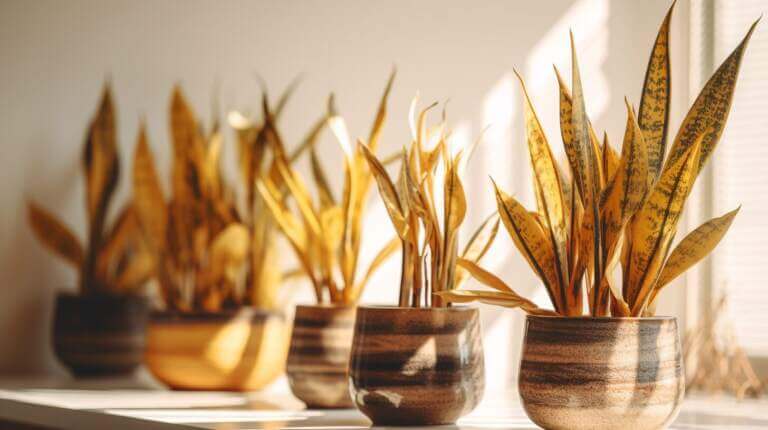Caring for Parlor Palm(Chamaedorea Elegans): Essential Tips for Light, Water, and Soil
Are you looking to add some lush, tropical flair to your indoor space? Look no further than the Parlor Palm, a popular indoor palm known for its deep green, feathery fronds. Caring for Chamaedorea elegans, also known as the Parlor Palm or Neanthe Bella Palm, can be quite simple with the right tips and knowledge. As an indoor plant enthusiast, I’m happy to share some essential care tips to help you grow and maintain your Parlor Palm, keeping it healthy and thriving for years to come.
Key Takeaways
- Parlor Palms are attractive, low-maintenance indoor palms native to rainforests of southern Mexico and Guatemala.
- These palms prefer bright, indirect sunlight and can tolerate lower light conditions, making them ideal for a variety of indoor environments.
- Watering should be done carefully, allowing the topsoil to dry out between waterings and avoiding overwatering that can lead to root rot.
- A well-draining, peat-based potting mix is essential for healthy Parlor Palm growth.
- Repotting should be done cautiously every other year, using a slightly larger container and a fresh, nutrient-rich potting mix.
- Parlor Palms can be propagated by seed, although the process can be challenging for the average indoor gardener.
Understanding the Parlor Palm: An Introduction to Chamaedorea elegans
The Parlor Palm, scientifically known as Chamaedorea elegans, is an attractive, low-maintenance indoor palm with a rich history and remarkable adaptability. Having its origins in the lush rainforests of southern Mexico and Guatemala, this timeless plant has been adorning indoor spaces since the Victorian era. The Parlor Palm, also known as Neanthe bella palm, is characterized by its dense, deep green foliage that adds a touch of elegance and serenity to any space.
As one of the most popular indoor plants worldwide, the Parlor Palm has a unique ability to thrive in a variety of indoor conditions. Its resilience is due to its natural habitat under the canopies of rainforests, where it receives filtered sunlight. Consequently, it can prosper in a range of lighting conditions, although bright, indirect sunlight is ideal for optimal growth.
Did you know? Parlor Palms typically don’t bloom indoors but can produce yellow flowers followed by dark berries if conditions permit.
The slow growth rate of this elegant palm tree is another appealing characteristic, which ensures that the plant remains a manageable size and an ideal choice for indoor environments. Let’s take a closer look at its growth habits and how to care for this distinct and elegant indoor houseplant.
- Size: Mature Parlor Palms generally reach 3 to 6 feet in height with a spread of 1 to 2 feet.
- Light Requirements: Prefers bright, indirect sunlight, and can tolerate low light conditions.
- Water Requirements: Moderate water needs, allowing the soil to dry slightly before re-watering.
- Soil Preferences: Well-draining, peat-based potting mix.
- Humidity Preferences: Thrives in high humidity, similar to its natural rainforest environment.
- Fertilizer Requirements: Use a palm-specific fertilizer during the growing season, every three to four weeks.
In summary, the chamaedorea elegans or Parlor Palm is a beloved indoor palm that has stood the test of time. Its attractive foliage, adaptability to various indoor conditions, and manageable size make it an excellent addition to any space. By understanding the origins and natural habitat of this beautiful houseplant, you can ensure that your Parlor Palm thrives and continues to be a timeless addition to your home.
Optimal Lighting for a Healthy Parlor Palm Plant
Parlor Palms thrive in bright, indirect sunlight and can grow in artificial lighting and lower light conditions where other indoor plants may struggle. Adequate lighting is essential to preserving the vibrant green fronds and promoting growth. Understanding the parlor palm light requirements ensures the plant remains healthy and maintains its decorative appeal.
Protecting Your Parlor Palm from Direct Sunlight
Though Parlor Palms are tolerant of various light conditions, direct sun exposure should be avoided. Intense sunlight can scorch the lush leaves of the palm, hindering its growth and overall appearance. Ideal locations include north-facing rooms or spots shielded from harsh light. A parlor palm indoors requires proper care and attention in this regard.
Remember, bright indirect light is best for Parlor Palms, as direct sunlight can cause irreversible damage to the fronds.
Finding the Perfect Spot for Your Parlor Palm’s Light Needs
Finding a location that offers optimal light conditions for a parlor palm indoors while protecting it from harsh sunlight is essential for its growth and well-being. The following list highlights locations within your home that provide a suitable balance between bright indirect light and low light conditions:
- North or east-facing windowsills
- Interior rooms with large windows and sheer curtains
- Indirectly lit corners of well-lit rooms
- Areas near windows but shielded by furniture or other plants
For those with limited access to natural light, artificial lighting for palms can be a viable solution. Indoor palm placement is essential to ensure your Parlor Palm receives the right amount of light it needs to grow and thrive.
By considering all these factors and placing your palm in a location that satisfies its light needs, you can create the perfect environment for your Parlor Palm to flourish. Whether using natural sunlight or artificial light sources, always remember to prioritize bright indirect light over direct sunlight to ensure the health and growth of your Parlor Palm.
Watering Your Parlor Palm: Striking the Right Balance
Watering your parlor palm may seem like a simple task, but it is a crucial aspect of proper care for parlor palm plants. Understanding the plant’s drought tolerance and watering preferences can help avoid common pitfalls such as overwatering and root rot, ensuring a healthy and vibrant plant.
Parlor Palms have a moderate drought tolerance, meaning they prefer to be underwatered rather than overwatered. This preference can save you valuable time and effort in maintaining your indoor palm’s health. The key to striking the right balance is to keep an eye on the soil moisture levels and adjust your watering habits accordingly.
During the active growing season, water your parlor palm weekly after checking that the topsoil has become dry. In the winter, reduce the watering frequency and make sure the top inch of soil dries out between waterings.
Allowing the soil to dry between waterings not only promotes healthy root development but also minimizes the risk of root rot, a common issue caused by keeping the soil too wet. Furthermore, using room temperature water without chemicals or additives ensures the best results when watering your parlor palm.
- Check the topsoil for moisture before watering: To judge whether it’s time to water your parlor palm, simply touch the topsoil with your fingers. If it feels dry, it’s time to water. If it’s still damp, wait a few days and check again.
- Adjust watering frequency according to the season: Keep in mind that your parlor palm may need more frequent watering during the active growing season and less during the colder months.
- Use room temperature water: Cold or hot water can shock the plant’s roots, so always use water at room temperature for the best results.
By following these guidelines, you can ensure the proper care for your parlor palm while avoiding the common problems of overwatering and root rot. With the right watering techniques, your beautiful, tropical indoor plant will continue to thrive in your home.
The Ideal Soil Mix for Nurturing Parlor Palms
When it comes to nurturing parlor palms, the soil mix plays a crucial role in ensuring the plant’s growth and overall health. Selecting the ideal soil mix for parlor palm is critical to providing a suitable environment for it to thrive in.
Drainage and Soil Composition: Key Factors in Palm Growth
A parlor palm requires a well-draining, peat-based potting mix to avoid root rot due to heavy, water-retentive soils. The right drainage for palm plants is essential to maintaining even moisture levels that are crucial for the palm’s growth. In addition to good drainage soil, the soil composition should include a balance of nutrients, making it rich and fertile.
To create the perfect soil mix for your parlor palm, combine the following elements:
- Potting soil: A high-quality potting mix forms the base of the soil mixture.
- Coarse sand: Adding sand to the mix improves drainage and prevents waterlogging.
- Peat: A peaty soil-based potting mix provides excellent moisture retention properties, allowing the soil to hold water without becoming waterlogged.
- Perlite or compost: Perlite or compost can help increase the soil’s aeration and drainage, promoting healthy root development.
By combining these elements in a ratio of 2 parts potting soil, 1 part coarse sand, 1 part peat, and 1 part perlite or compost, you can create the perfect soil mix that meets parlor palm soil needs.
Remember: A well-draining, nutrient-rich soil composition is key to maintaining healthy and thriving parlor palms.
A Guide to Repotting and Propagating Parlor Palms
Learning the right way to repot your Parlor Palm is crucial for maintaining its health. As a slow-growing palm, this plant usually requires repotting only every other year. However, due to its weak root system, care must be taken during this process. With proper repotting and care, you can nurture the plant’s growth and help maintain an attractive, healthy indoor palm.
When repotting indoor palms, it is essential to choose a container that is one size larger than the current pot. This allows the root system to grow without becoming cramped. Opt for a pot with ample drainage holes to prevent waterlogging, as soggy soil can lead to detrimental root issues. The ideal potting mix for Parlor Palms is a well-draining, peat-based blend that promotes a healthy balance of nutrients and moisture.
Parlor Palm propagation can be a little trickier. The most common method is by seed, while division is rarely used, as it may cause stress to the plant. After repotting your Parlor Palm, make sure to monitor the soil condition. If you notice the soil becoming mucky, it may be time for another repotting session to keep your palm healthy and vigorous. Adopt these expert pointers, and you’re well on your way to ensuring the longevity and beauty of your Parlor Palm!
FAQ
What are the ideal light conditions for Parlor Palm growth?
Parlor Palms thrive in bright, indirect sunlight. They can adapt to artificial lighting and lower light conditions, but avoiding direct sun exposure is key to keeping their leaves lush and vibrant.
How often should I water my Parlor Palm?
During the active growing season, water your Parlor Palm weekly, ensuring that the topsoil has become dry. In winter, reduce frequency, and allow the top inch of soil to dry out between waterings to avoid root rot.
What type of soil mix is best for Parlor Palms?
The Parlor Palm prefers a well-draining, peat-based potting mix. A blend of potting soil, coarse sand, peat, perlite, or compost creates the right balance of nutrients and drainage for optimal palm growth.
When and how should I repot my Parlor Palm?
Repot your Parlor Palm cautiously every other year due to its weak root system. Choose a container one size larger with proper drainage to prevent soggy soil conditions, which can lead to root problems.
What is the best method for propagating Parlor Palms?
Propagation is typically done by seed and rarely by division, as it can stress the plant. Ensure the potting mix drains well and repot if the soil becomes mucky to prevent root damage.







